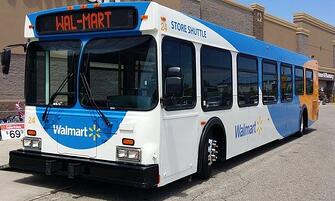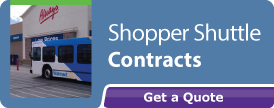 There have been seismic shifts in American driving and shopping habits, and retailers are feeling the threatening winds of change. Could shopper shuttles turn the tide?
There have been seismic shifts in American driving and shopping habits, and retailers are feeling the threatening winds of change. Could shopper shuttles turn the tide?
It’s no secret that American values, attitudes, and behavior have changed dramatically since the turn of the 21st century . . . and they keep changing every day. Name a topic, any topic: diet, exercise, the environment, charitable giving, marriage, smoking, media consumption—whatever it is, our feelings about it have changed. And how we feel affects what we do.
Retailers are among the first to experience the ripple effect when people’s behavior changes. The most successful retailers are those who are willing to change, as well.
First, a little background.
Driving Habits Are Changing
An unprecedented number of young people don’t drive, won’t drive, or wish they didn’t have to drive. It’s true. In 2014, the Global Strategy Group surveyed Millennials in 10 major American cities and found that a majority of 18- to 34-year olds would like to be less reliant on cars. Of those surveyed, 66% said that access to high quality alternative transportation is one of their top three criteria for choosing a place to live, while 80% think it’s important to have a wide range of options for getting around—including public transportation, ride-sharing services, and walkable neighborhoods.
Meanwhile, adults age 65 and up—for whom automobiles have always been an essential part of daily life—are driving less. And the trend is expected to continue. A 2011 study by Transportation for America predicted that rising life expectancies and an aging population will inevitably lead to large numbers of baby boomers who no longer drive. “These millions of older adults will need affordable alternatives to driving in order to maintain their independence as long as possible,” the study said, adding that senior adults who rely on others for transportation make 15 percent fewer trips to the doctor, 65 percent fewer trips to visit friends and family, and 59% fewer trips to shop or eat out.
Shopping Habits Are Changing
Surprise, surprise: Up to half of consumers make online purchases. Internet shopping has surpassed travel, e-books, and music downloads in terms of how people spend their time and money online. And we’re not just buying fashion and jewelry. We’re using our computers, tablets, and smart phones to order health and beauty supplies, electronics, prescription drugs, groceries, wine, and even cars—to the tune of $200 billion a year, according to the Wall Street Journal.
Ever since the slap-in-the-face recession of 2008-’09, customer loyalty isn’t what it used to be. For one thing, people simply don’t shop as much, and when they do shop, they’re more cautious and less likely to spend impulsively. Shoppers who want added value for their retail dollar almost always shop around—online and in stores—before buying big-ticket items like appliances or furniture. And while we don’t have statistics on this, let’s be honest: few of us have any compunction about “show-rooming”—i.e., trying something on in a retail store and then ordering the same product online for less. (So much for customer loyalty.)
Add to these new tendencies the fact that Millennials—the generation on the verge of having some disposable income—seem to value access over ownership, meaning they’d probably rather have a Netflix subscription than a DVD collection.
Retail is Changing, Too
Clearly, brick and mortar retailers need new ways to attract customers and garner customer loyalty. Ernst & Young (EY), in its 2014 report, Digital Retail: Analyzing the Effect on Retailers, warns that customers are migrating away from retail stores and that retailers must respond now. To expand upon EY’s findings:
- Because their customers are shopping online, retailers will need a superlative and multi-faceted digital presence—websites, social media, and even virtual stores—to complement their physical stores.
- By the same token, retailers will have to differentiate the in-store experience from the online experience. In-store incentives like gifts, refreshments, contests, parties—whatever it takes to draw a crowd—will replace the “door buster” sales of yesterday.
- Enhanced customer loyalty programs, irresistible offers, and personalized service will make shopping an “event” and give creative retailers a competitive edge.
And here’s one last, simple idea whose time has come. You’ve heard the expression, “If the mountain won’t come to Muhammed, Muhammed must go to the mountain.” Translated for today’s retailer, this means: If your customers won’t come to you, you must go to your customers. Figuratively, yes . . . but also literally: Go to your customers. Go pick them up and bring them to your store. Smart retailers have been doing it for years. Take Walmart, for instance. In communities everywhere, Walmart-branded buses pull up to housing complexes, community centers, and senior adult facilities several times a day for no other reason than to give their customers a lift so they can go shopping.
For more information about getting a shopper shuttle for your organization, contact James Sawyer at jsawyer@indiantrails.com or follow the link below:


